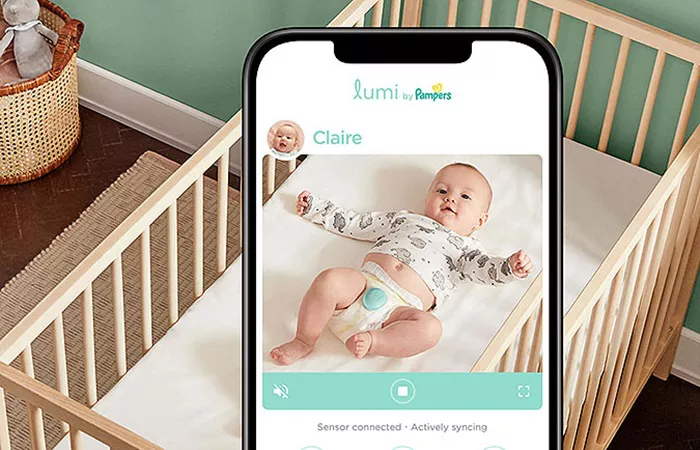Pampers are a popular choice for parents due to their convenience and effectiveness in keeping babies dry and comfortable. However, a common question arises: how many hours can Pampers be used before needing a change? This article will delve into the factors affecting the duration of diaper usage, the potential risks of prolonged use, and best practices for maintaining your baby’s comfort and health.
Factors Affecting Diaper Usage Duration
The number of hours a diaper can be used depends on several factors:
1. Baby’s Age and Size
Newborns require frequent diaper changes compared to older babies. This is due to their smaller bladder size and more frequent bowel movements. As babies grow, their diaper usage may decrease slightly.
2. Baby’s Diet
Breastfed babies tend to have more frequent, smaller bowel movements compared to formula-fed babies. The type of milk can affect how often diapers need changing.
3. Diaper Absorbency
Different diaper brands and types offer varying levels of absorbency. Pampers, known for their high absorbency, can typically hold more liquid, extending the time between changes.
4. Baby’s Skin Sensitivity
Some babies have sensitive skin that requires more frequent diaper changes to prevent irritation and diaper rash. Monitoring your baby’s skin condition can help determine the optimal change frequency.
See also: What Is Baby Product
Potential Risks of Prolonged Diaper Use
Using diapers for extended periods without changing can pose several risks:
1. Diaper Rash
Prolonged exposure to moisture and bacteria can lead to diaper rash. This condition is characterized by red, inflamed skin that can be painful for the baby.
2. Urinary Tract Infections (UTIs)
Leaving a wet diaper on for too long can increase the risk of UTIs, especially in female babies. Bacteria from the stool can migrate into the urinary tract, causing infection.
3. Discomfort and Irritation
A soiled diaper can cause discomfort and irritation. Babies may become fussy or irritable, indicating the need for a change.
Best Practices for Diaper Changing
To ensure your baby’s comfort and health, follow these best practices for diaper changing:
1. Regular Checks
Check your baby’s diaper every 2-3 hours. This helps ensure that you catch any soiling promptly, reducing the risk of diaper rash and other issues.
2. Change After Bowel Movements
Always change your baby’s diaper immediately after a bowel movement. This prevents prolonged exposure to stool, which can irritate the skin and increase the risk of infection.
3. Use Quality Diapers
Invest in high-quality diapers like Pampers, which offer superior absorbency and fit. This can help extend the time between changes while keeping your baby comfortable.
4. Apply Barrier Cream
Applying a barrier cream during each diaper change can protect your baby’s skin from moisture and reduce the risk of diaper rash.
5. Nighttime Diapering
For nighttime, use overnight diapers that are designed to hold more liquid. This can help your baby sleep through the night without needing a diaper change.
Detailed Breakdown of Diaper Usage Stages
Newborns (0-3 months)
Newborns typically require a diaper change every 2-3 hours. They have frequent bowel movements, often after each feeding. A high-quality diaper like Pampers Swaddlers can help manage the frequent changes due to its excellent absorbency.
Infants (3-12 months)
As babies grow, the frequency of bowel movements may decrease, but wet diapers are still common. During this stage, a diaper change every 3-4 hours is usually sufficient. Pampers Baby Dry can be particularly effective during this stage, providing up to 12 hours of protection.
Toddlers (12-24 months)
Toddlers may require fewer diaper changes, approximately every 4-5 hours. However, their activity level increases, making a snug and secure fit crucial. Pampers Cruisers are designed to accommodate active toddlers, offering flexibility and dryness.
Nighttime Diapering Solutions
Nighttime diapering requires special attention due to longer sleep periods. Using overnight diapers can be beneficial:
1. Overnight Diapers
Overnight diapers like Pampers Overnight are designed to hold more liquid, providing up to 12 hours of protection. This can help your baby (and you) sleep uninterrupted through the night.
2. Double Diapering
Some parents opt for double diapering at night, layering two diapers for added absorbency. Ensure the inner diaper is snug to prevent leaks.
3. Preemptive Changes
If your baby wakes up frequently at night, consider changing the diaper before each feeding. This can prevent leaks and keep your baby comfortable.
Signs That a Diaper Needs Changing
Being able to recognize when your baby’s diaper needs changing is crucial:
1. Wetness Indicator
Many diapers, including Pampers, come with a wetness indicator. This line changes color when the diaper is wet, signaling the need for a change.
2. Fullness
A visibly swollen or sagging diaper is a clear sign that it needs to be changed.
3. Smell
A noticeable smell is an obvious indicator that a diaper change is necessary.
4. Baby’s Behavior
Fussiness, crying, or restlessness can indicate discomfort due to a wet or soiled diaper.
Handling Diaper Rash
Despite best efforts, diaper rash can still occur. Here’s how to manage it:
1. Keep the Area Clean and Dry
Clean your baby’s diaper area thoroughly during each change. Use warm water and a soft cloth or fragrance-free wipes.
2. Frequent Changes
Increase the frequency of diaper changes to keep the area as dry as possible.
3. Use Diaper Cream
Apply a thick layer of diaper cream containing zinc oxide during each change to protect the skin.
4. Air Time
Allow your baby some diaper-free time each day to let the skin breathe and heal.
5. Consult a Pediatrician
If diaper rash persists or worsens, consult your pediatrician for advice and possible treatment options.
Conclusion
Understanding how many hours Pampers can be used is essential for maintaining your baby’s comfort and health. Factors such as age, diet, and diaper quality play a significant role in determining the optimal change frequency. By following best practices for diaper changing and staying vigilant for signs that a change is needed, you can ensure your baby stays dry, comfortable, and happy.


